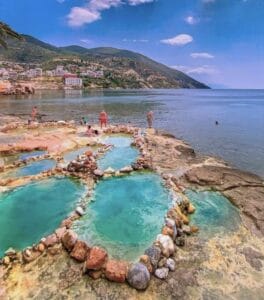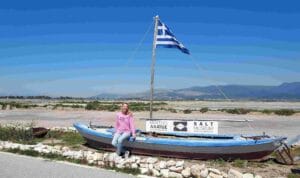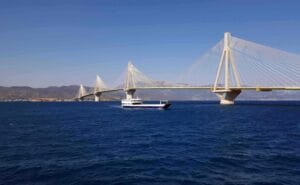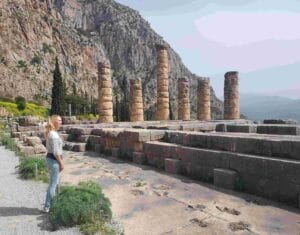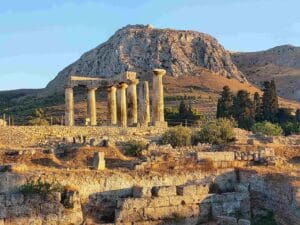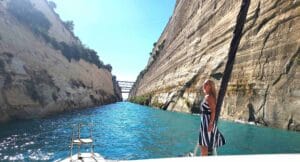When we were sailing in the south of Lefkas, we already saw the next island in the Ionic Sea in front of us: Kefalonia, also known as Cephallenia, Cephallonia or Kefallinia.
So that would be our next destination to explore!

The sailing trip from Lefkas to Kefalonia was only 10 miles, so we were there in 2 hours of sailing.
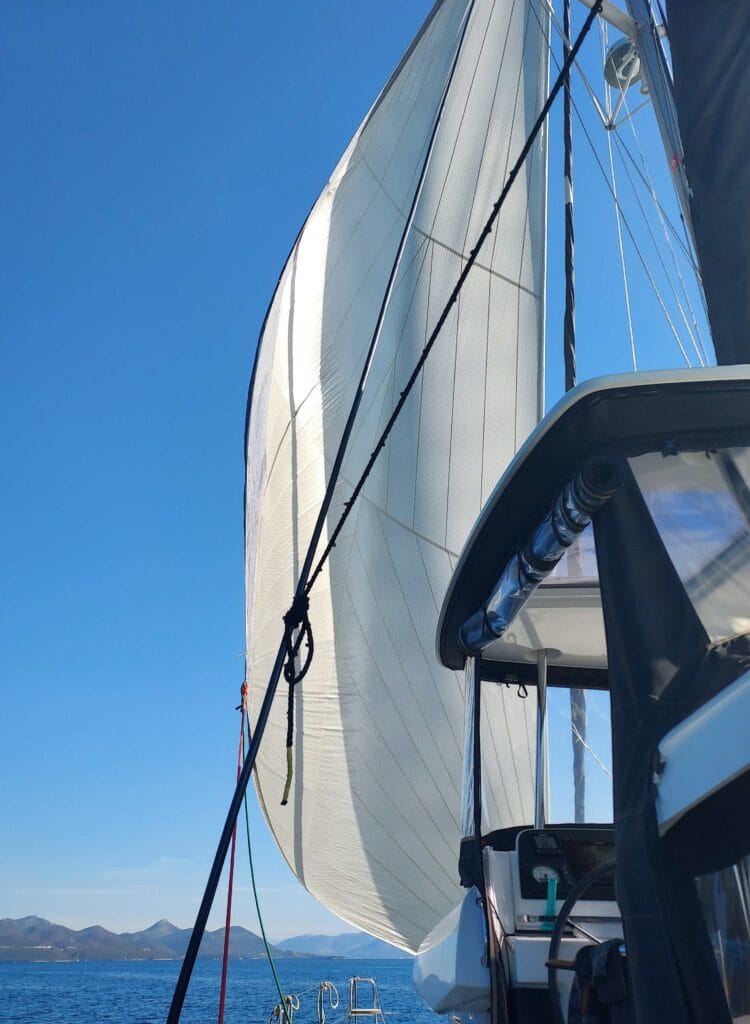
Fiskardo
This village in the north of Kefalonia is often mentioned on my Navily app as a nice place for sailors. Because there is a large sheltered bay and an easily accessible boulevard full of tavernas, trendy cafes and boutiques.
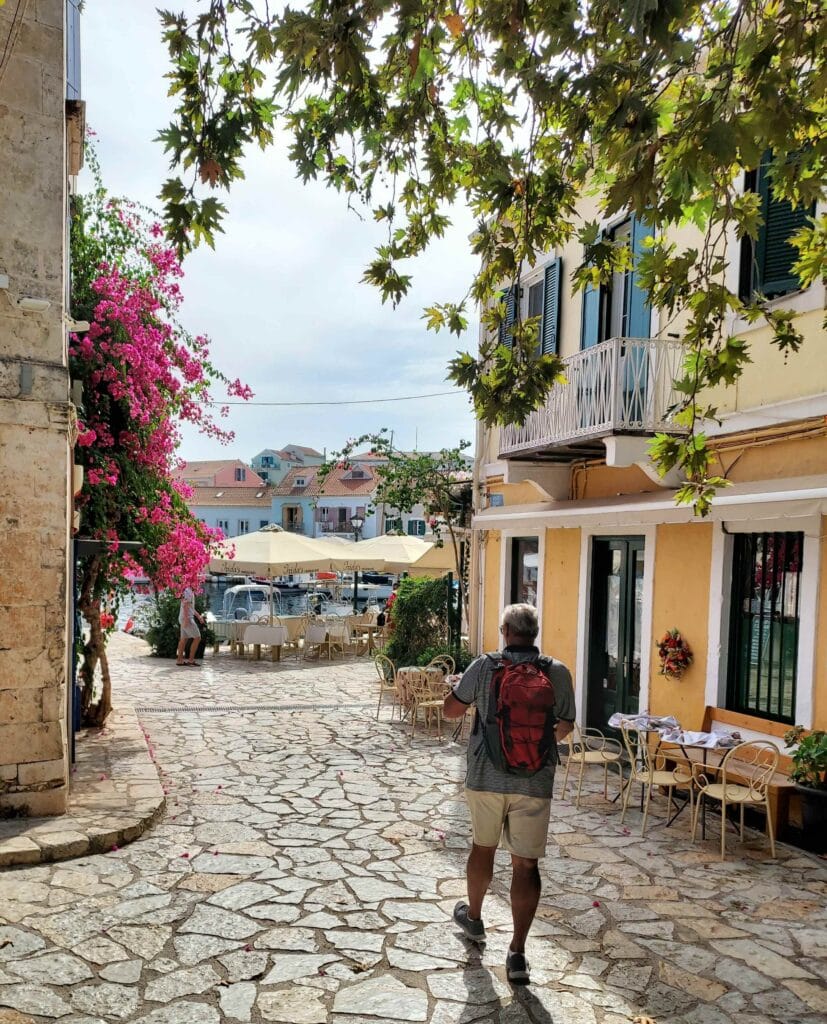
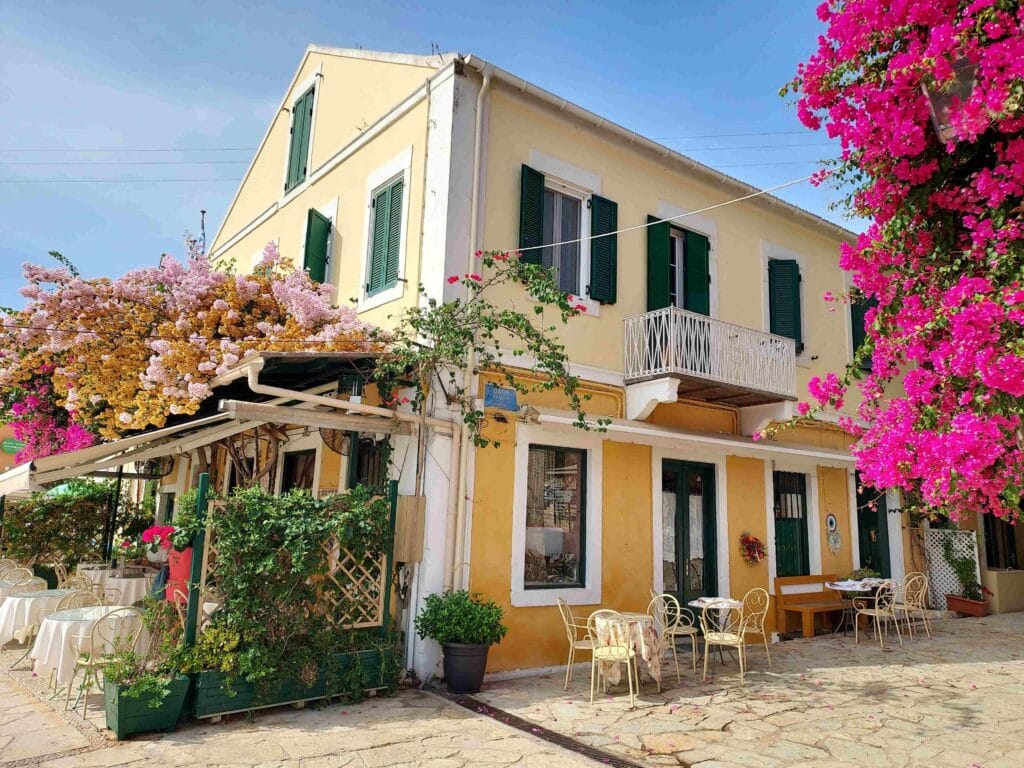
They had not said too much, because in combination with the authentic Venetian houses with colorful facades, wooden shutters and flower-decorated balconies and the cozy harbor, Fiskardo looked attractive.
We had a cup of coffee at the harbor at one of the tavernas.
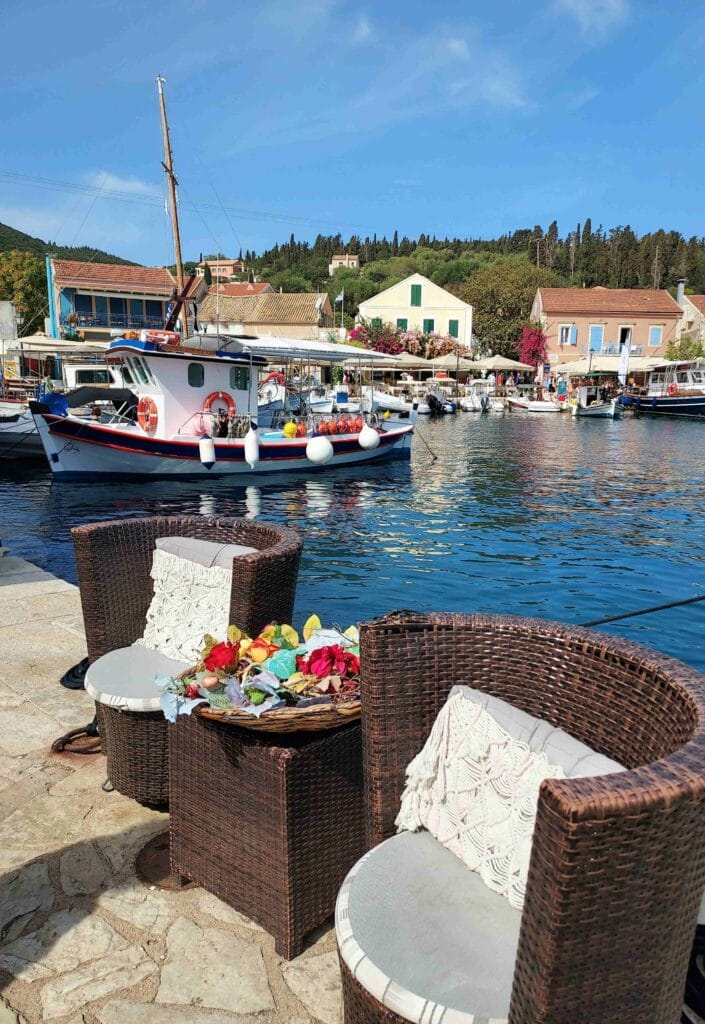
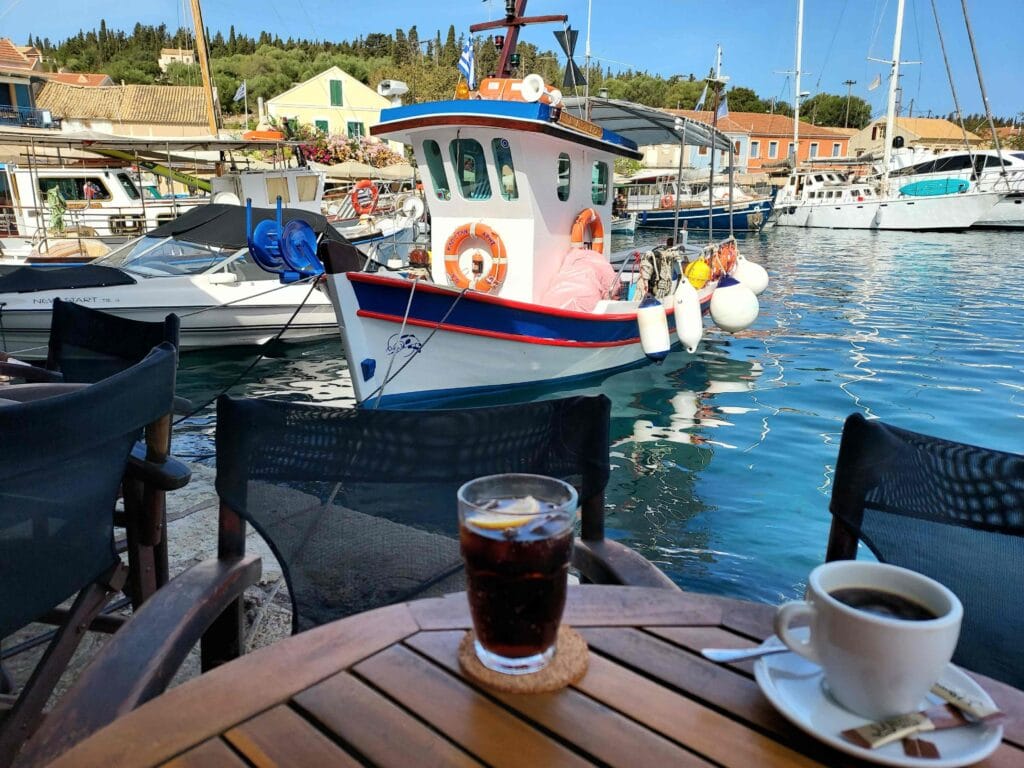
Our friends Robert and Margot sailed with us for a week in Kefalonia (and Zakyntos) and also enjoyed Fiskardo. They went swimming every day and in the bay with crystal clear water that was great. Even swimming under the catamaran!
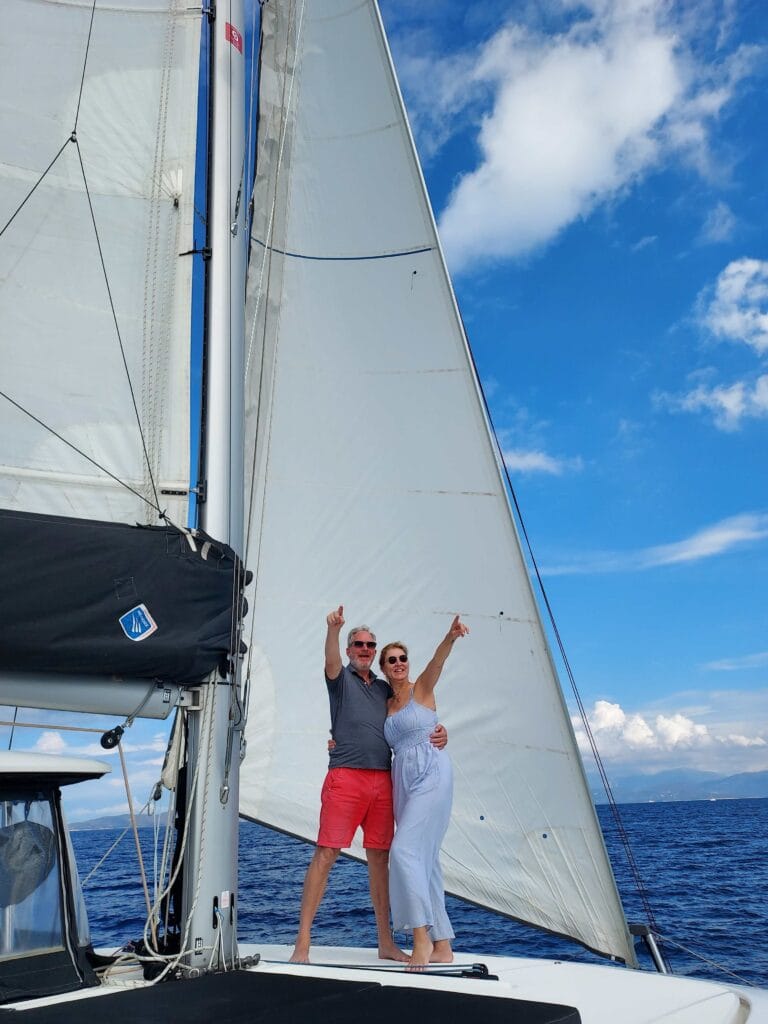
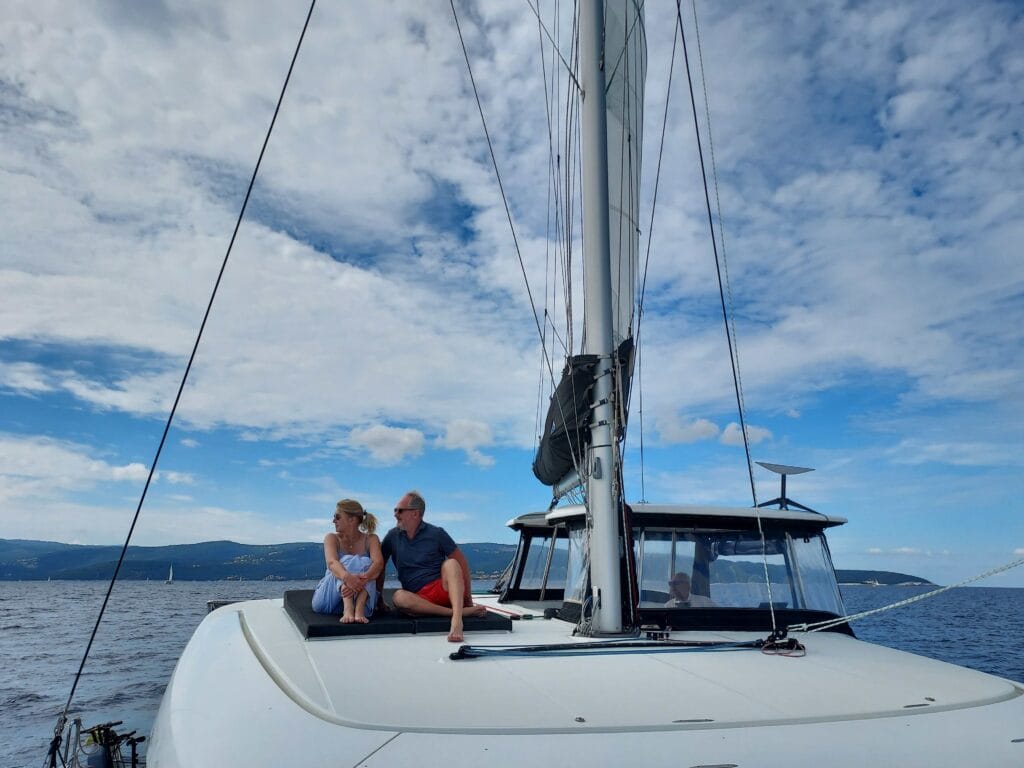
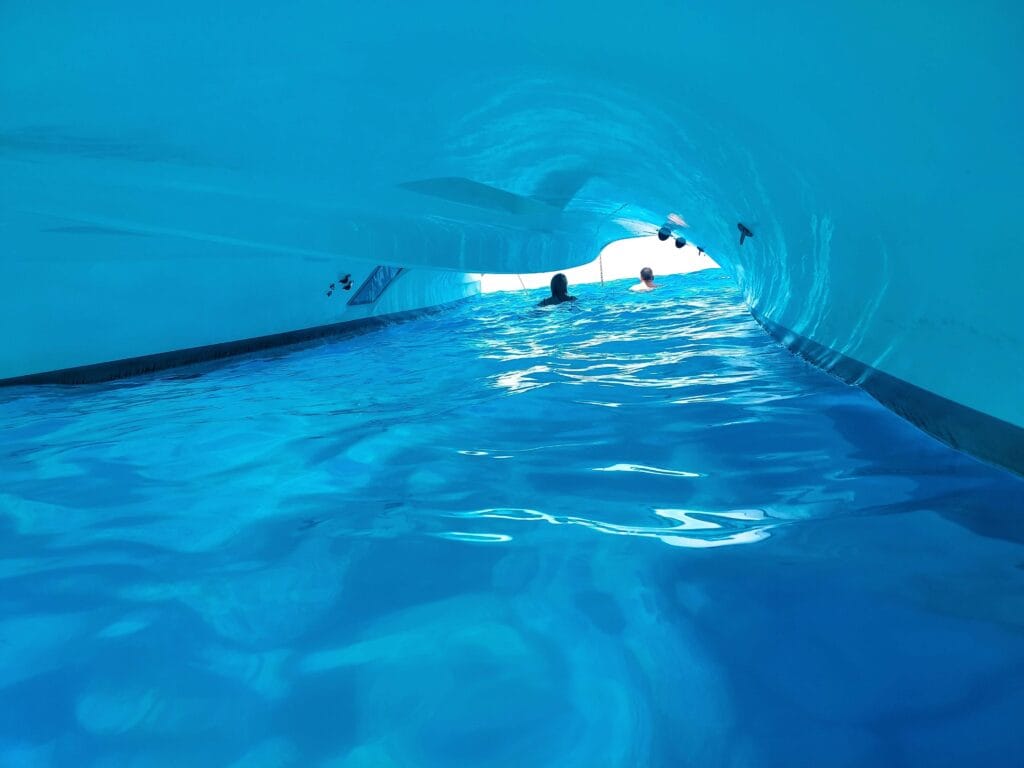
The evening walk along the boulevard of Fiskardo was also very nice to do! Atmospheric. And there was also a huge ship, lots of white with gold and everywhere chandeliers and planters with palm trees in them that were on the ship. We were impressed, it looked exotic!


Sami
Sami, a lively port town on the east coast, was our next stop on Kefalonia. Another typical Greek coastal town, where people easily set up a terrace near the beach, under the trees. The green and blue colours are so beautiful together.
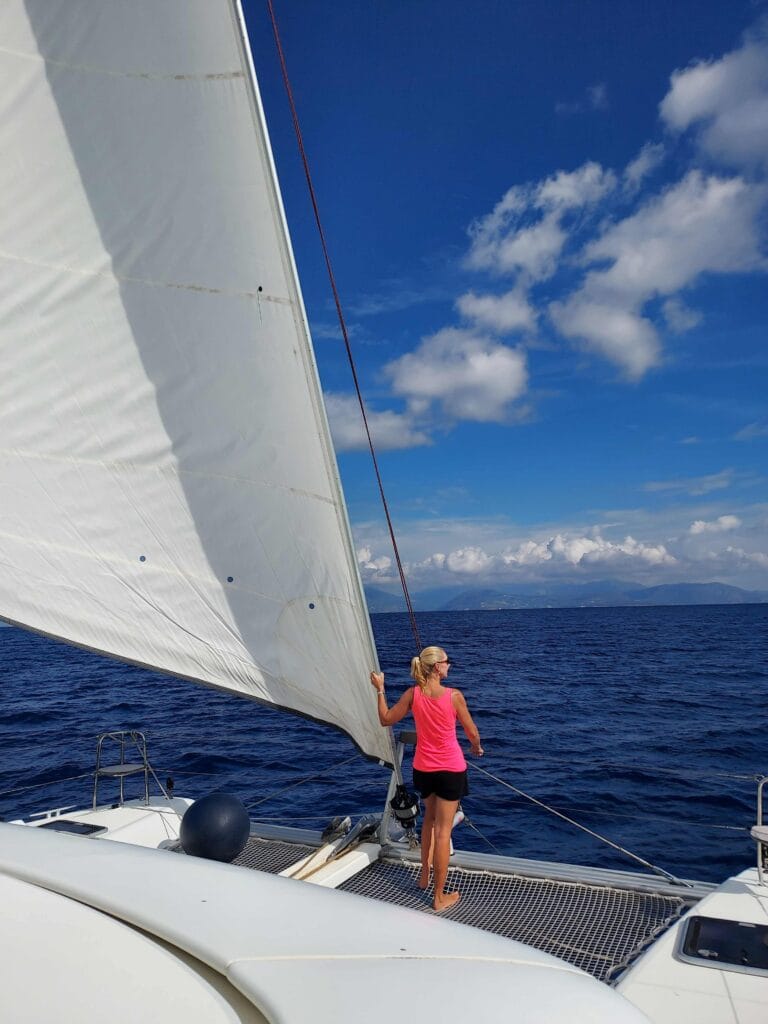
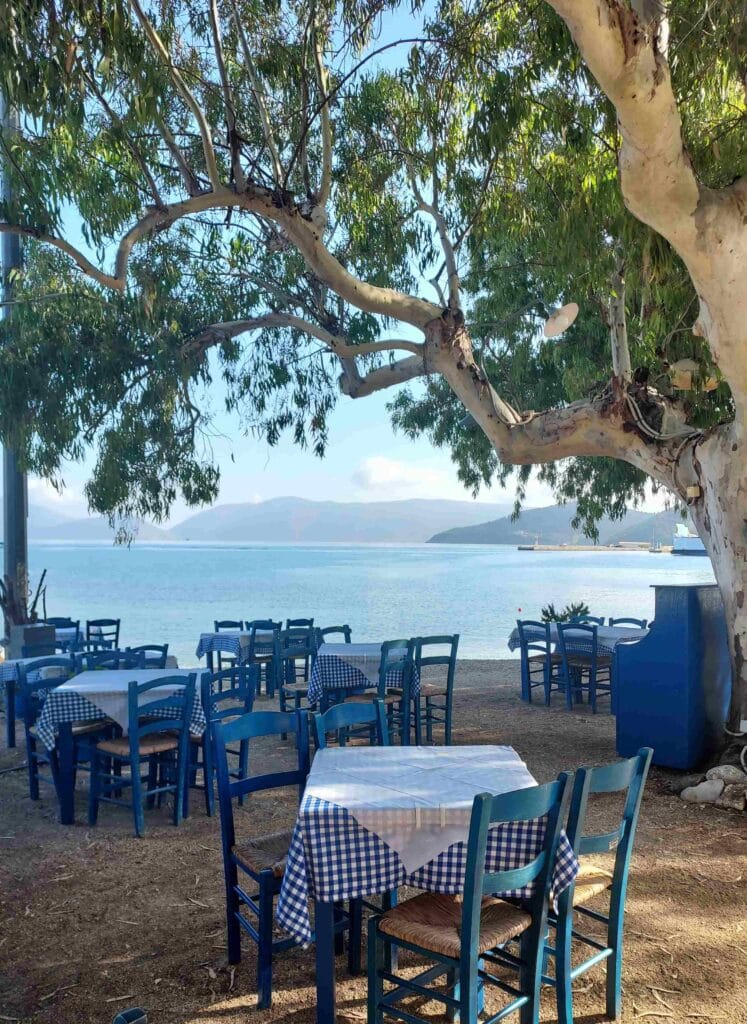
Sami has two impressive caves. We took our bikes and first went to the Melissani cave. This underground lagoon, also called the “cave of the nymphs”, can only be reached by boat. And a row of boats was already ready, you could enter with about 8 people.
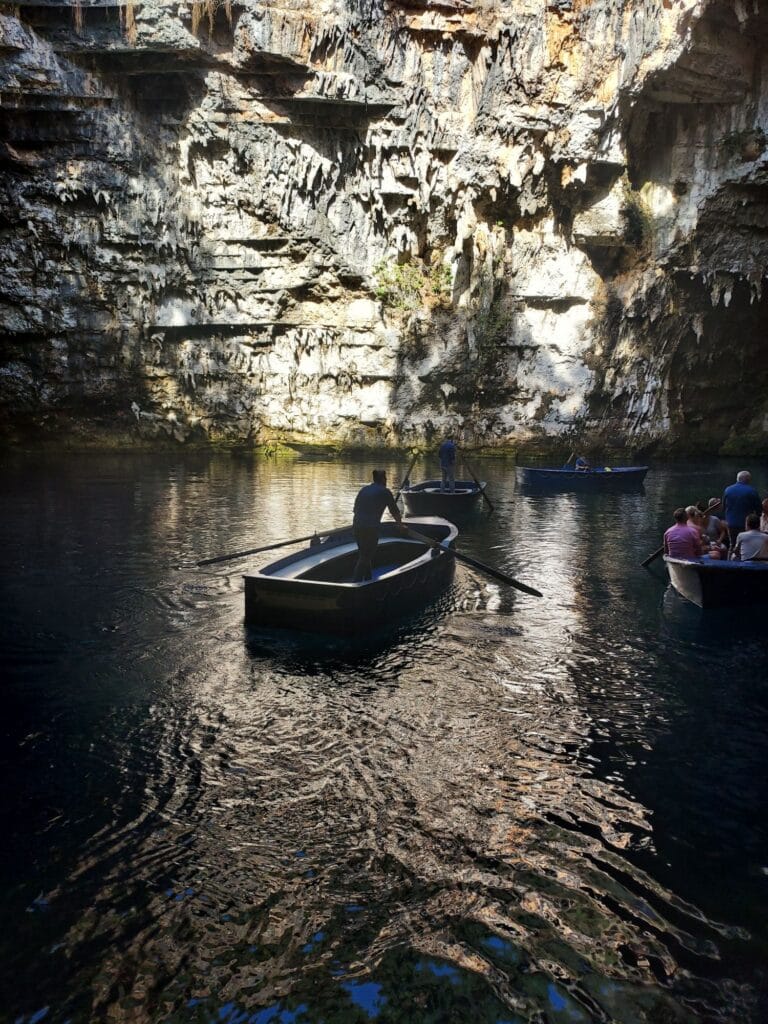
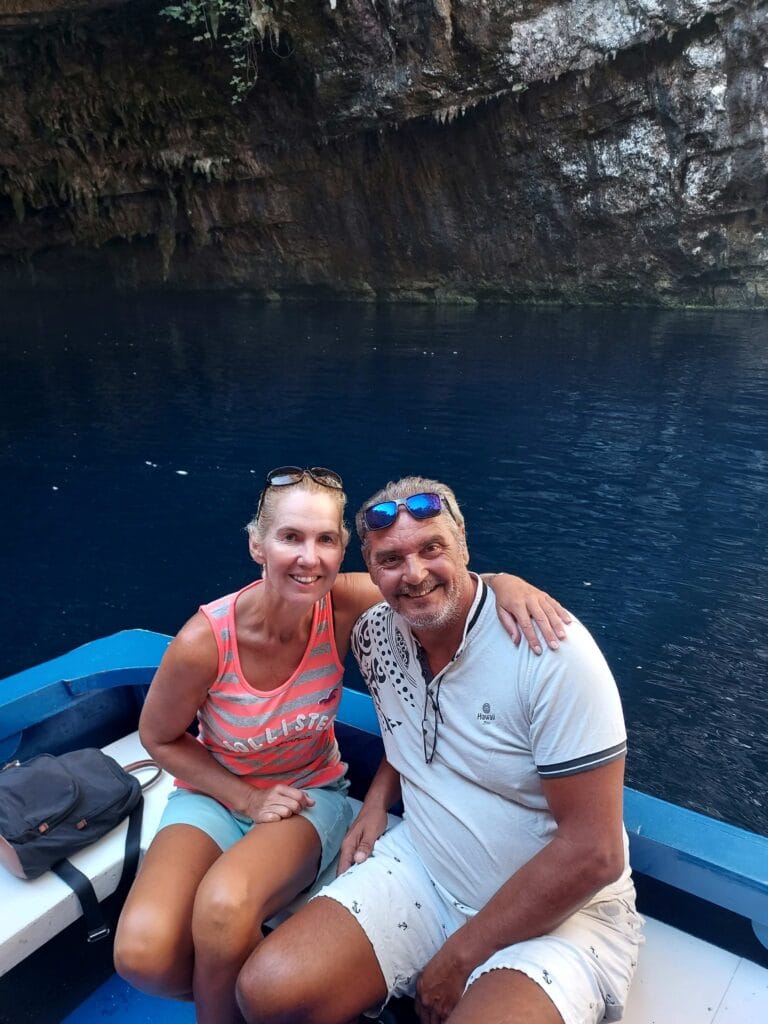
The cave has an opening in the roof through which sunlight makes the water appear deep blue.

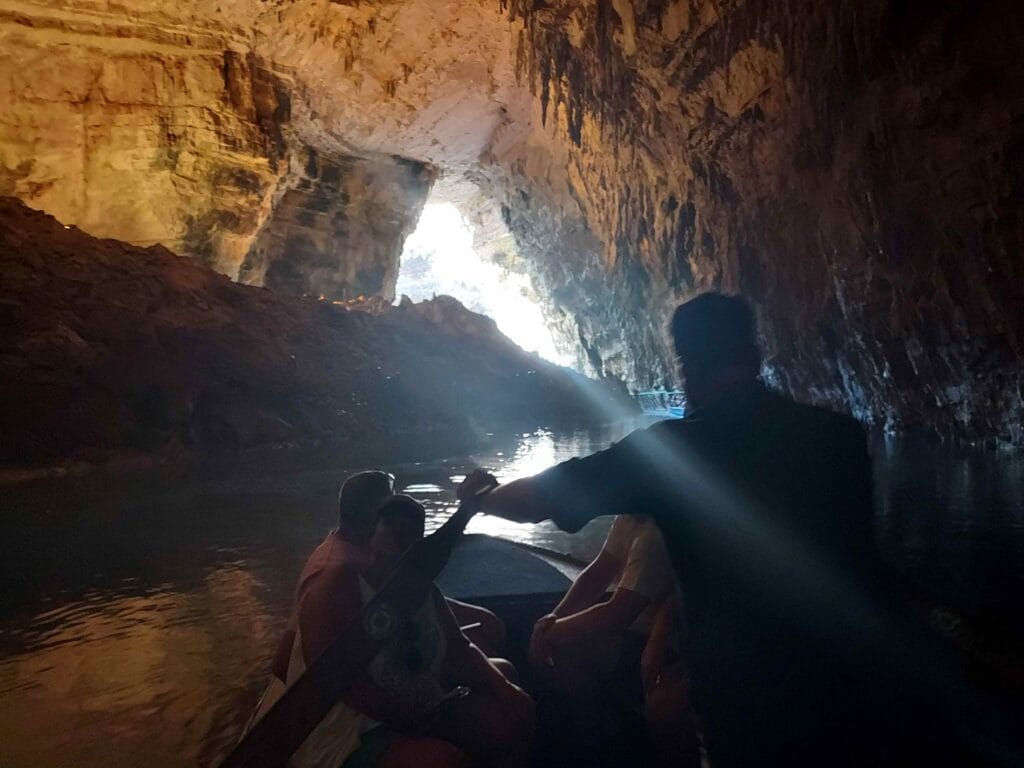
A short rowing trip through the cave was magical, with the play of light and shadow and beautiful water.
The Drogarati cave: the other must-see cave. This stalactite and stalagmite cave is more than 150 million years old and has a huge central hall with perfect acoustics. It felt like we were entering a natural cathedral.
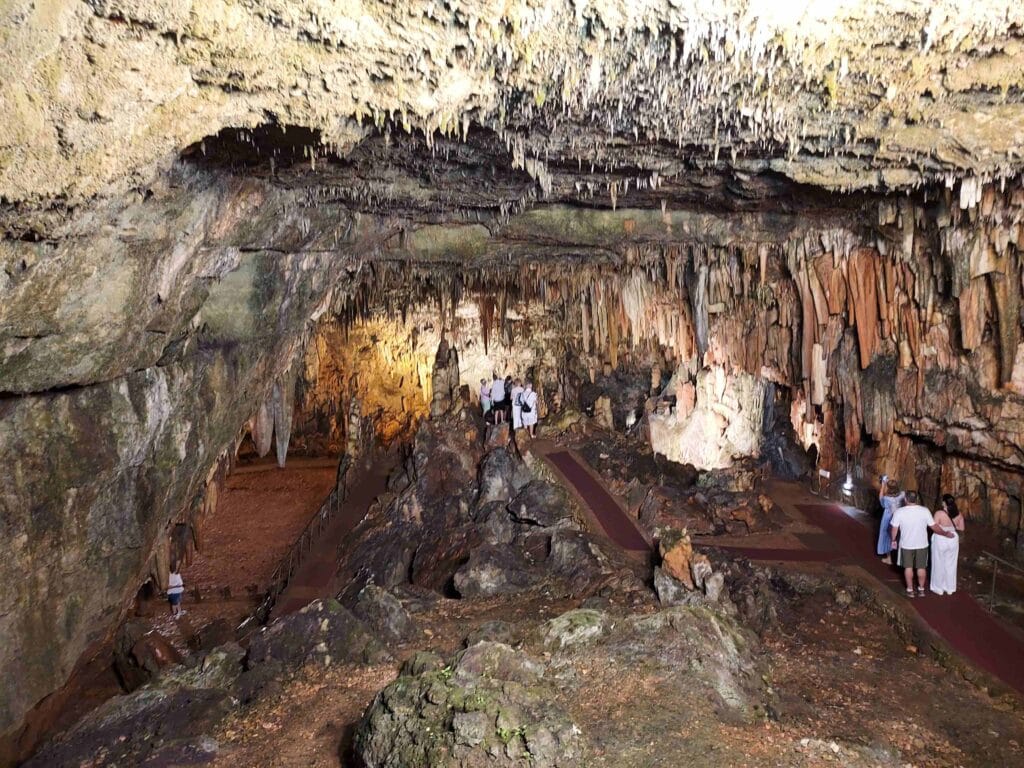
Your eyes were really wide open, especially with all the stairs and corridors and the beautiful lighting also made the colours of the cave stand out beautifully.
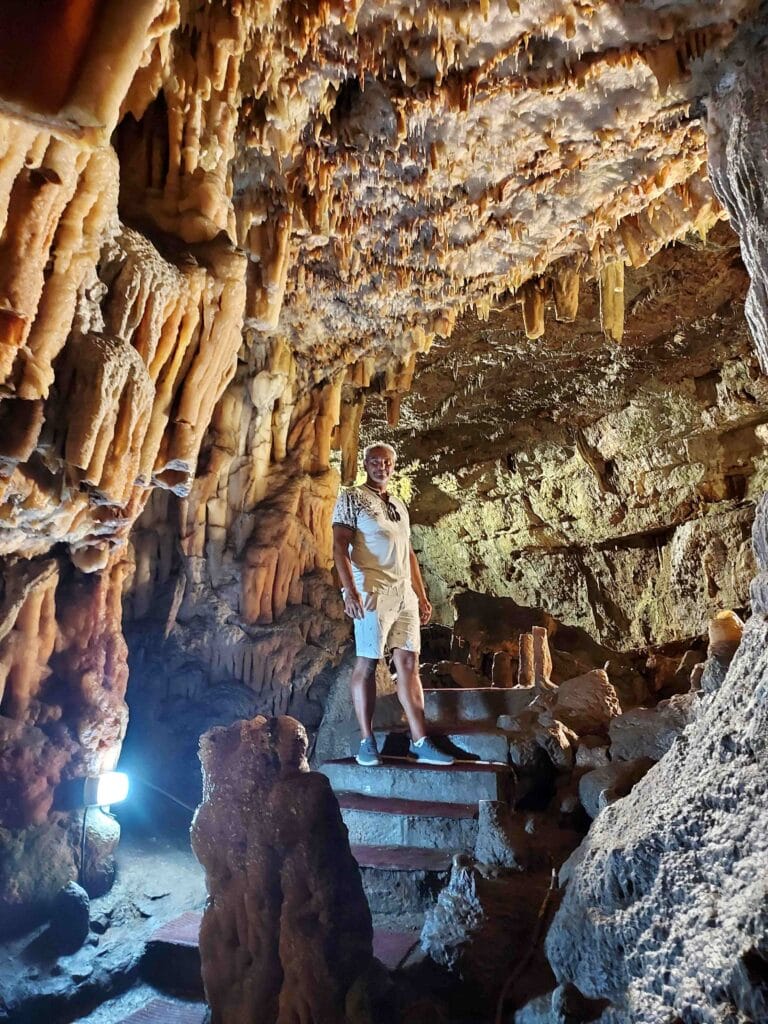
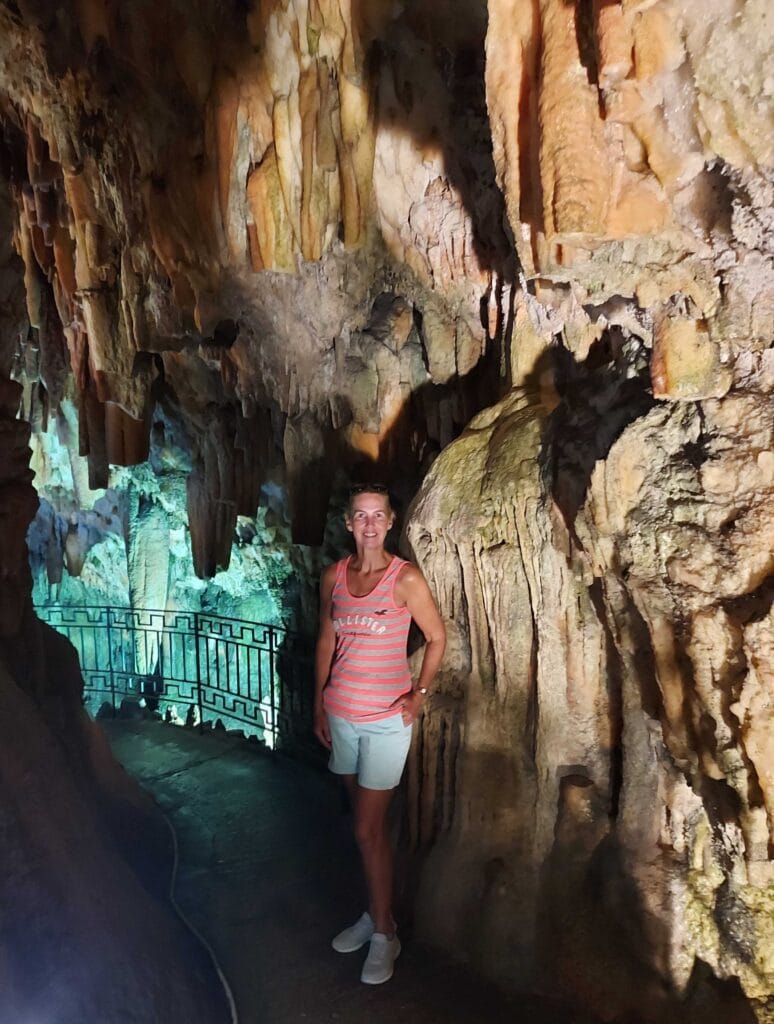
Ithaki and Vathi
Ithaki is a small island next to the island of Kefalonia and is still relatively undiscovered by mass tourism. It has a peaceful and authentic appearance.
We arrived in Vathi with the end of the sun in a beautiful light in the bay.
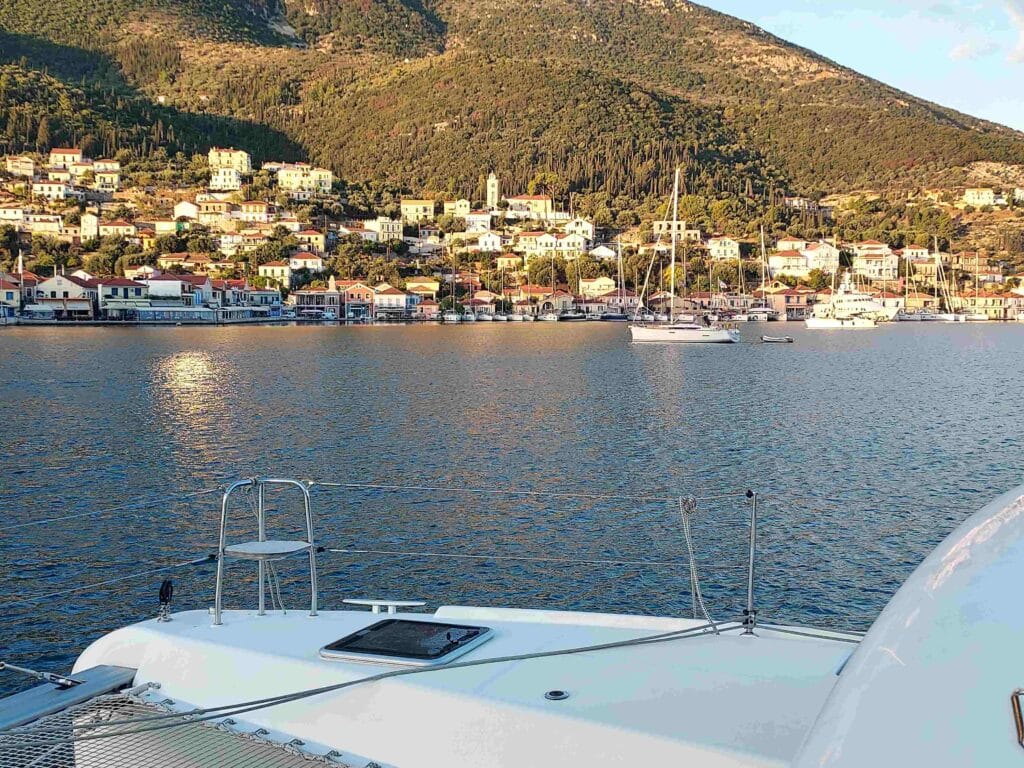
The next day we saw how beautiful this almost circular bay is, protected by hills and many colorful houses. Vathi is called the Saint-Tropez of the Ionian Sea. And I understood, it is also elegant with towers and beautiful buildings that seem to climb up in steps from the water.
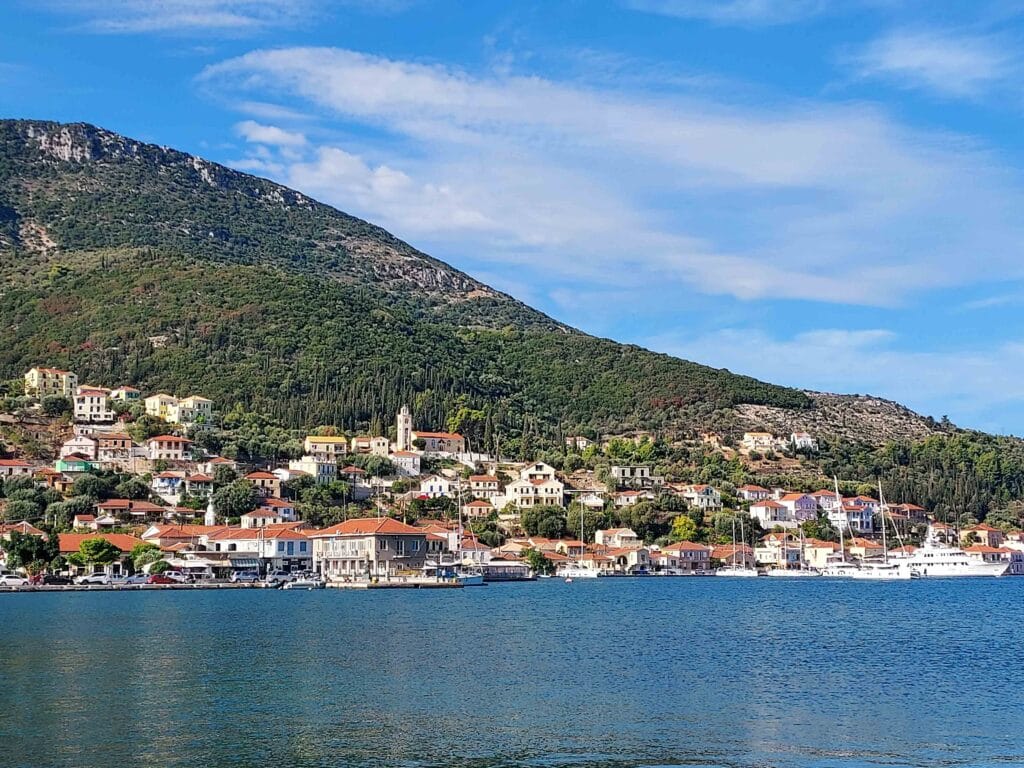
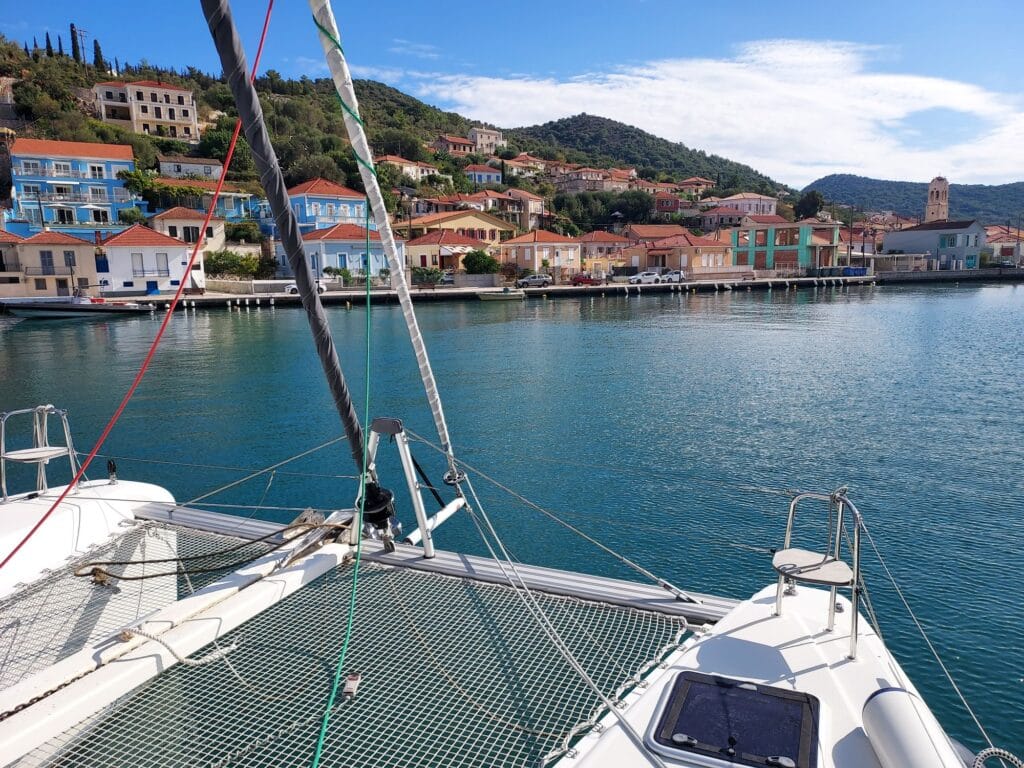
When we looked back, we also saw on the hills that it was really becoming autumn/winter. Although the temperature was still very much around 24 degrees, you could see the colors of the leaves already becoming redder and browner.
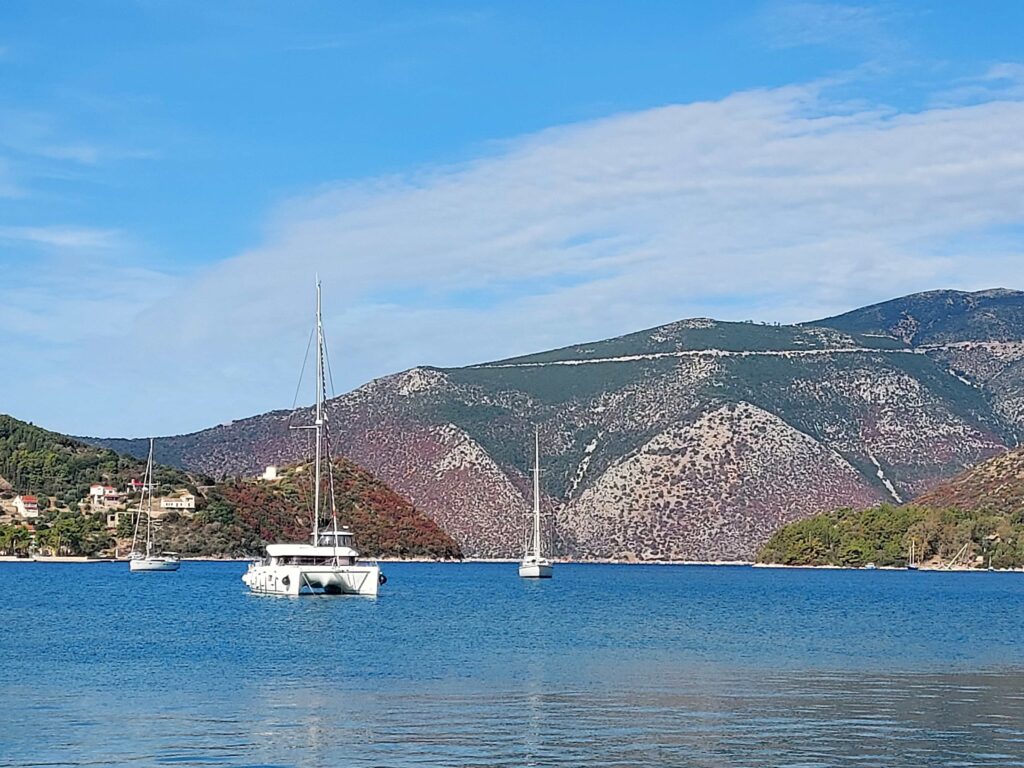
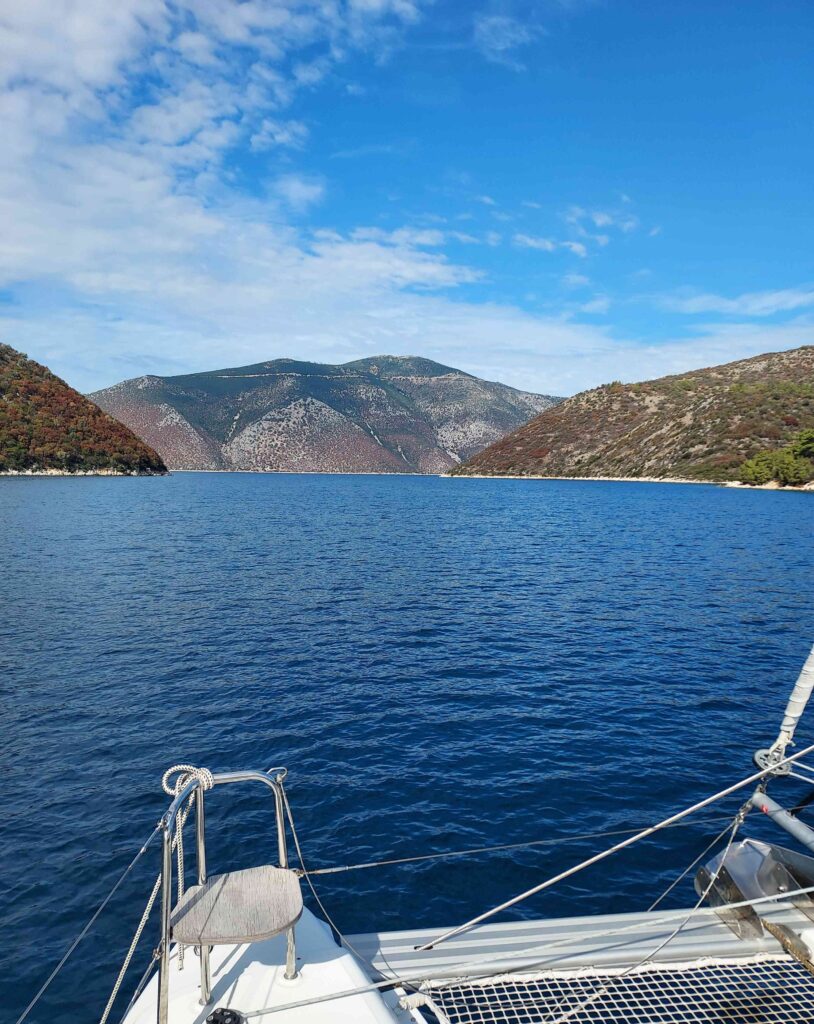
Poros
Back to ‘the mainland’ of the island of Kefalonia. Together with Robert and Margo we bought a delicious ice cream and sailed on to Poros.
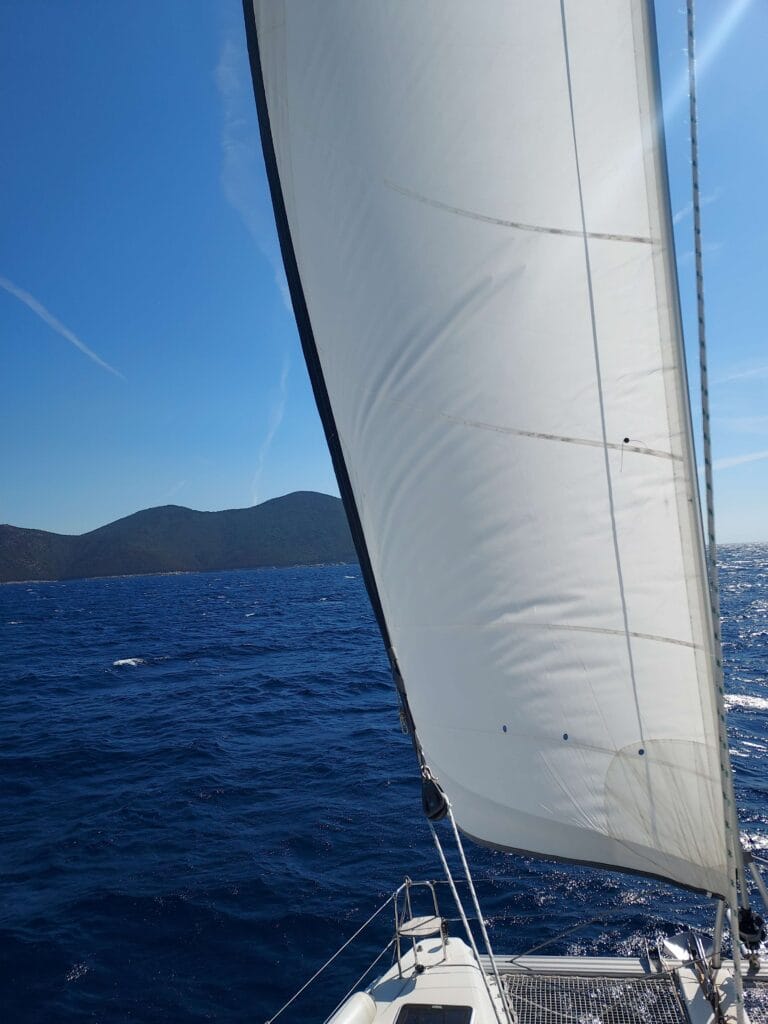

There was a large harbour there and we had something to eat.
The next morning Margo had the good idea to have breakfast. Gilles and I hardly ever do that together, we usually go sailing again quite soon after getting up, but this was a very nice idea! Relaxed on the terrace we had fresh orange juice and a croissant and it was so nice to sit there that I had a hard time leaving ;).


We stayed in the place and of course another ice cream was always good! Also nice that some restaurants help you with the difficult Greek language and have these texts on their napkins.

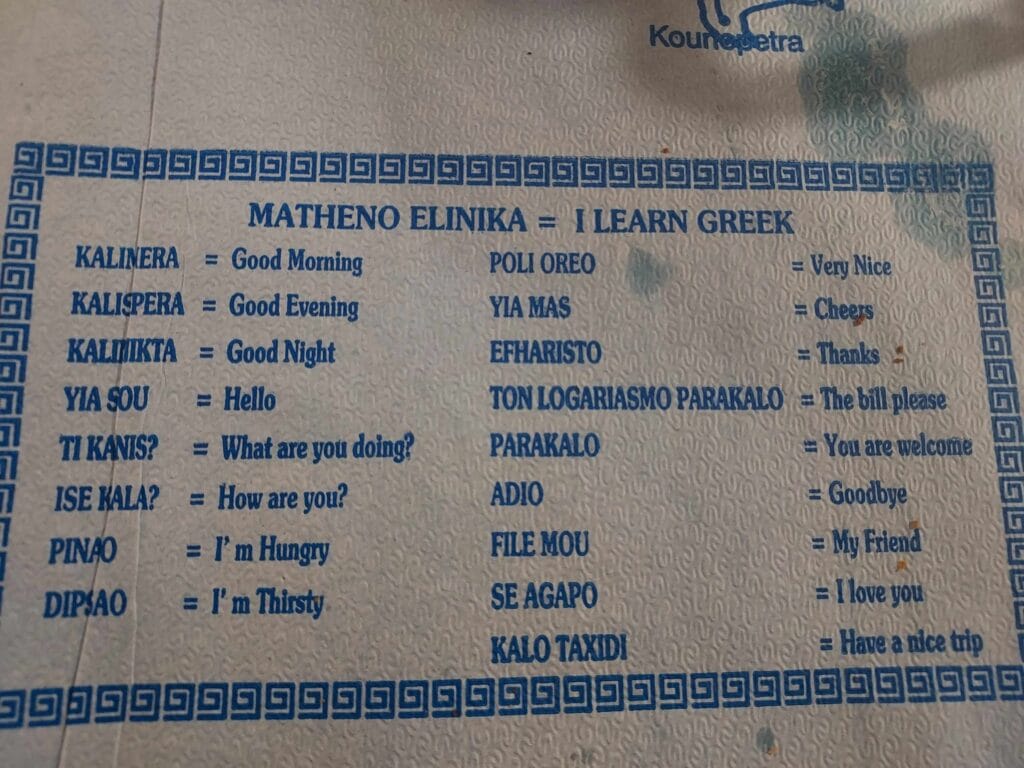
Margo is a beautician and part of this week’s holiday was not only enjoying sailing and good food, but also a hydrating mask for the ladies. I think people who walked along the quay and saw these 2 white faces sitting inside looked strange ;).

Argostoli
The south coast of Kefalonia was quite rugged, especially at the south-eastern tip, with many high underwater rocks, so we sailed around them quite a bit. But things became more relaxed when we reached the bay around Argostoli, the capital of Kefalonia.


It offers a rich mix of historical sights and natural wonders. Some of the most notable attractions we saw:
Katavothres. Here seawater flows into the island via underground channels, a process that has long fascinated scientists. They are sinkholes. And to exploit this natural phenomenon, a traditional water wheel was installed that is powered by the current. This water wheel, located in the Fanari district, is a popular attraction and offers insight into the unique geology of Kefalonia.
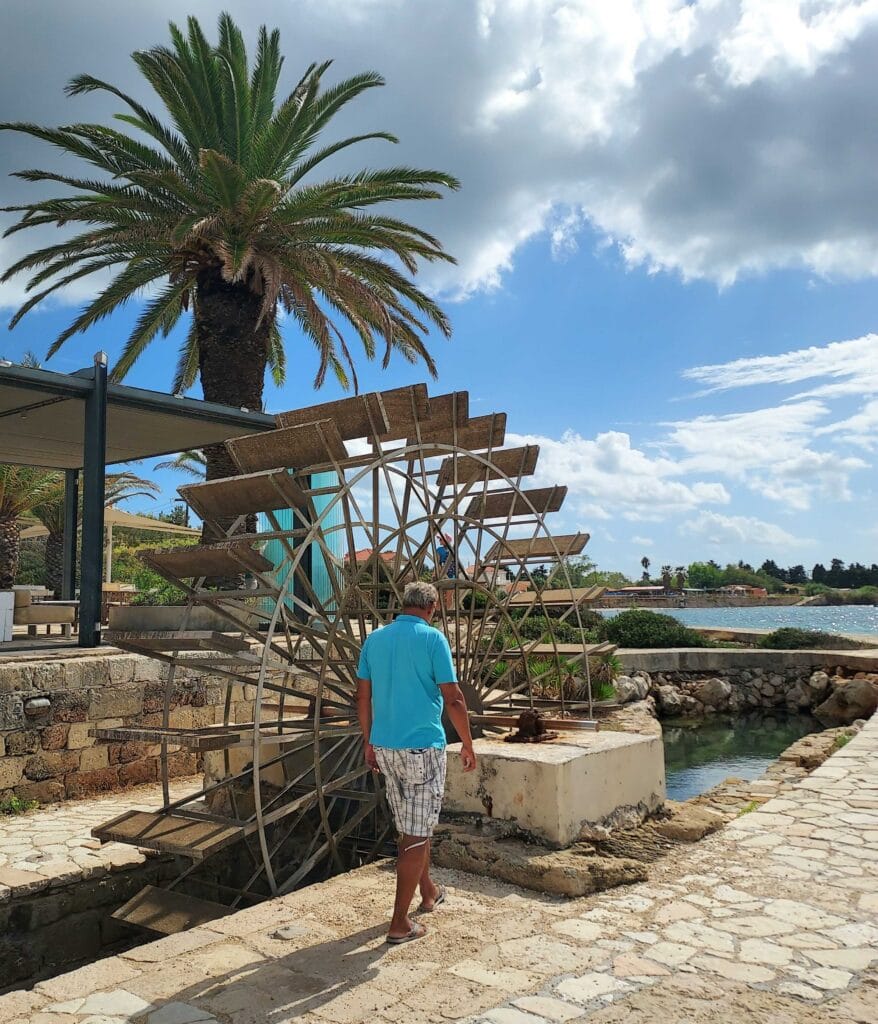
Nearby is a striking lighthouse, Saint Theodoroi, also known as the Fanari Lighthouse. The lighthouse was built in 1828 under the rule of the British Governor Charles Napier. The white, circular structure with 20 Doric columns and an 8-metre high tower is a favourite spot for tourists and locals alike. The location offers panoramic views over the sea.
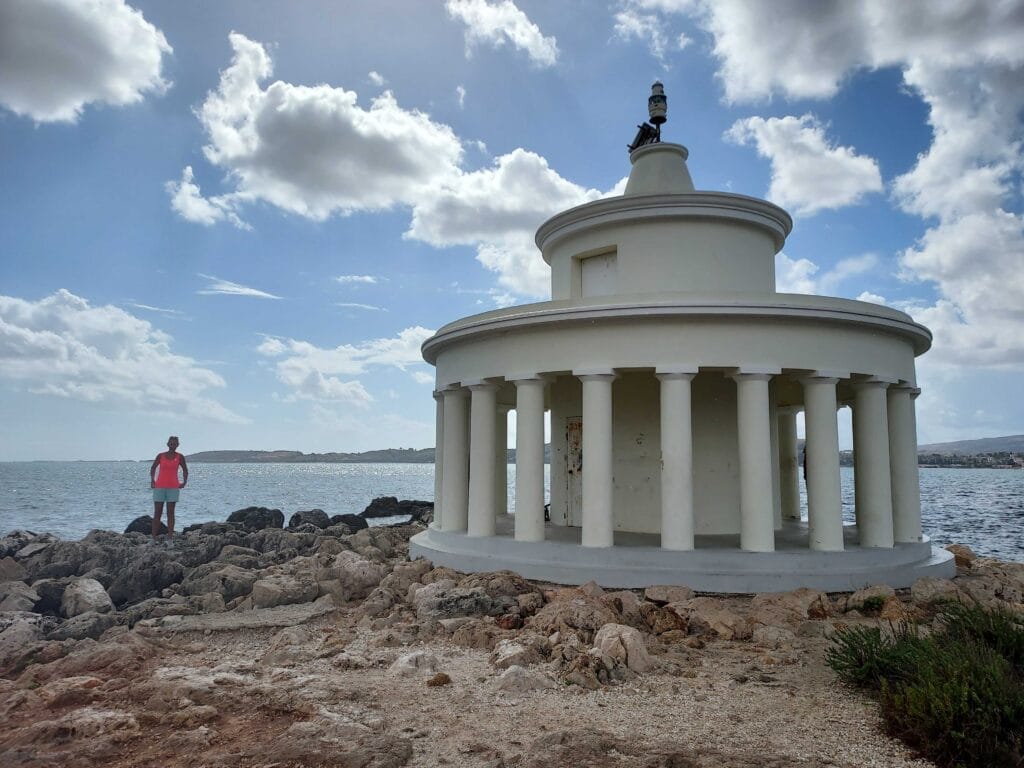
The bay was calm and Gilles tried to catch a fish with his rod again, but unfortunately no bite. We looked from our boat at the stone wall that is said to be the longest stone bridge in the world. The De Bosset Bridge, also known as the Drapano Bridge, was built in 1813 by the Swiss engineer Charles Philippe De Bosset during the British rule of the Ionian Islands. At 689.9 metres long, it is the longest stone bridge over the sea in the world.
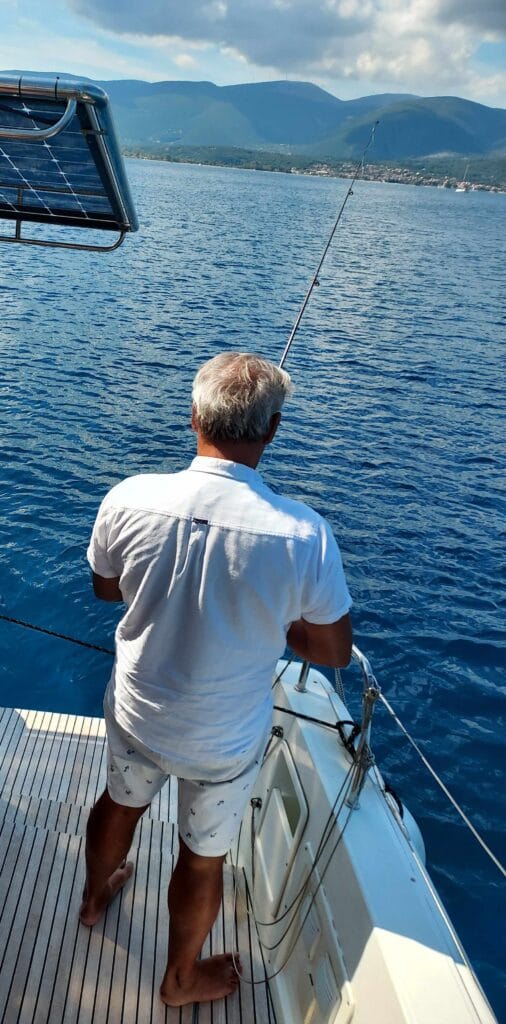

The bridge connects Argostoli to the opposite coast and offers a scenic walk with views over the bay. Halfway across the bridge is an obelisk commemorating its completion, with inscriptions in Greek, English, Italian and Latin. Of course, we also took our bikes and e-scooters across the bridge.


